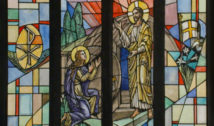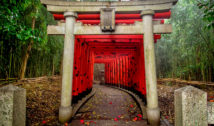
The “Right To Die” is No Debate in Jainism
- By Gary Nguyen --
- 03 Jul 2016 --
![By Claude Renault from Reykjavik, Iceland (Flickr) [CC BY 2.0], via Wikimedia Commons](http://www.worldreligionnews.com/wp-content/uploads/2016/07/Jain_meditation.jpg)
While a terminally ill person’s “right to die” is debated in America, the practice is held in high regard in the Jain religion.
The debate surrounding a terminally ill person’s right to die has been raging in the western world for many years now. However, in India, this debate is moving in the opposite direction.
The “Right To Die” is No Debate in Jainism[/tweetthis]
Jainism, one of the most long-standing religions in India, allows terminally ill patients to slowly enter a process of fasting, ultimately rejecting all food and drink. Doctors familiar with the practice state that death is thereby caused by dehydration, which often brings with it a sense of peace that may explain the origins of the practice.
The practice, known as “Sallekhana”, had up until now been held in high regard by many in the Jain community. Not only do nuns and monks practice it when they are terminally ill, but many members of the lay community do as well. However, just as western nations have begun to question their attitudes towards euthanasia, so too have Indians in Jain areas.
Anti-suicide laws were originally put in place in India under British rule, to stop widows from throwing themselves onto their husbands’ funeral pyres as they would traditionally do and continue to do so. As the Indian government struggled to uphold these laws, in 2006 a young lawyer, Nikhil Soni, made the point that Sallekhana may be seen as similarly breaking these laws. Last year, the high court of Rajasthan agreed with him, although India’s Supreme Court have placed a stay on that verdict.
@TheEconomist Right to Die has existed in Jain religion for over 2000 years. Rest of world catching up.https://t.co/ZJP0o2HN8u
— Deepak Seth (@SetDeep) November 5, 2015
Whatever that final verdict might be, the case highlights the key cultural differences between the Jain community, and their belief that a peaceful acceptance of death is not only compassionate but logical, and an Indian government that struggles to find the middle ground in an increasingly diverse nation.



















